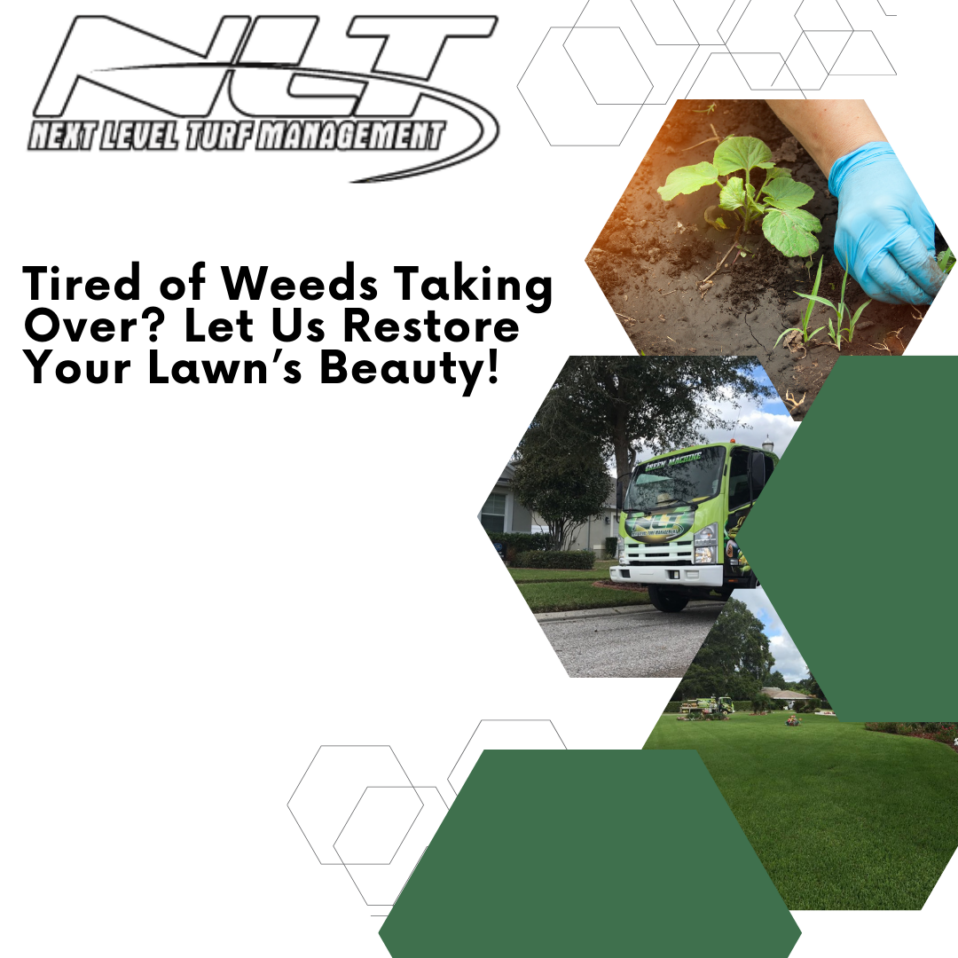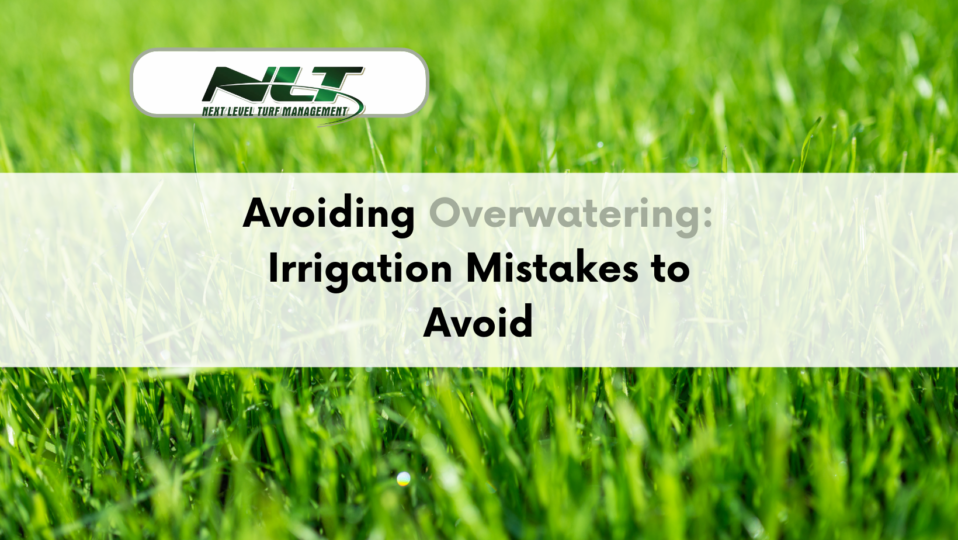Is your once lush, green lawn now looking more like a weed-infested wasteland? Are you at your wit’s end, trying to reclaim your yard from the clutches of nut sedge, crabgrass, and other unwelcome invaders? We totally get it. Nothing can be more frustrating than watching something you’ve worked so hard to cultivate become overrun with these pesky, persistent plants. But don’t throw in the towel just yet! We’re here to tell you that it’s not a lost cause. You don’t have to live with a lawn that’s more weeds than grass.
We’ve got the solution to restore your lawn’s beauty, bringing it back to its former glory or perhaps even better. From identifying the types of weeds wrestling control of your yard, to tackling them with the most effective and eco-friendly methods, we’ve got it all covered. We believe that every lawn, no matter how overrun by weeds, has the potential to be a beautiful, green oasis. And we’re passionate about helping you achieve this.
So, if you’re tired of constantly battling weeds and longing to see your lawn thrive, stick around. We’ll provide you with the knowledge, tools, and tips to reclaim your lawn and keep it looking its best. We’re ready to help you win the war on weeds and restore your lawn’s beauty. Your dream of a lush, vibrant lawn is still within reach. Let’s make it happen together!
Understanding Common Central Florida Weeds
To effectively combat weeds in your lawn, it’s essential to understand the types of weeds commonly found in Central Florida and their growth habits. This knowledge will enable you to adopt the most effective weed control strategies tailored to your specific lawn conditions. Some prevalent Central Florida weeds include:
- Crabgrass: One of the most common and challenging weeds to control, crabgrass is an aggressive, annual grass species that thrives in warm climates and can quickly spread if untreated.
- Dallis Grass: Dallis grass is a perennial grass native to South America. This weed is characterized by its thick, coarse blades that grow in clumps, and tall seed stalks that can reach up to five feet in height. Dallis grass thrives in sandy or clay soils with good drainage. It grows rapidly and can quickly overtake a lawn or garden if not managed properly.
- Dollarweed: Also known as pennywort, dollarweed is a perennial with round, shiny leaves and flowers that resemble small white umbrellas. This weed thrives in damp conditions, which are common in Central Florida.
- Nutsedge: Also referred to as nutgrass, nutsedge is a perennial weed with a grass-like appearance. It reproduces through underground tubers called nutlets, making it extremely difficult to control.
Effective Methods for Weed Control
Managing weeds in your lawn is a crucial task that requires a strategic and comprehensive approach. These methods can be combined to achieve optimal results and ensure your Central Florida lawn remains weed-free and beautiful:
- Pre-emergent herbicides: Applying pre-emergent herbicides strategically before weed seeds germinate can effectively prevent the growth and establishment of new weeds in your lawn. Timing is essential with pre-emergent herbicides, as they are most effective when temperatures are between 65 and 70 degrees Fahrenheit.
- Post-emergent herbicides: For weeds already emerged and visible in your lawn, post-emergent herbicides provide targeted control. Selective post-emergent herbicides are designed to target specific weed species while leaving your desirable turfgrass unharmed.
- Hand-weeding: For small-scale weed presence, manual removal by hand or using a specialized weeding tool can be effective. Always ensure to remove the entire root system to prevent regrowth.
- Proper mowing: Mowing your lawn at the correct height for your turf variety can help prevent weed invasion by encouraging healthy turf growth and shading the soil, making it difficult for weed seeds to flourish.
- Fertilization: Regularly feeding your lawn with the appropriate type and amount of fertilizer promotes healthy turf growth, which can outcompete and hinder weed establishment.
The Importance of Lawn Health in Weed Prevention
A healthy and robust lawn is your best defense against weeds. By nurturing strong turfgrass, you create an inhospitable environment for invasive weed species. Consider implementing the following best practices to maintain optimum lawn health:
- Irrigation: Overwatering or underwatering your lawn can weaken turfgrass, creating favorable conditions for weeds to invade. Ensure you implement an appropriate and consistent watering schedule to maintain strong, healthy grass.
- Aeration: Aerating your lawn annually helps relieve soil compaction, allowing water, oxygen, and nutrients to penetrate the root zone more effectively. This promotes healthy root development and a robust, weed-resistant turf.
Benefits of Partnering with a Professional Turf Management Company
While some homeowners may choose to tackle weed management independently, engaging the services of a professional turf management company like Next Level Turf offers a wealth of benefits:
- Expertise: Experienced turf management professionals possess comprehensive and up-to-date knowledge of the most effective weed control strategies and techniques, ensuring that your lawn receives the best possible care and weed prevention.
- Customized approach: A professional turf management company will develop a tailored weed control plan based on your unique lawn’s specific needs and requirements. This customization guarantees targeted, efficient, and sustainable weed management solutions.
- Time and cost savings: By entrusting your weed control needs to a professional, you save time and can potentially avoid costly missteps in herbicide application or other management practices.
- Integrated lawn care: In addition to weed control, a professional turf management company can offer comprehensive lawn care services, ensuring that all aspects of your landscape are meticulously maintained and attended to.
Utilizing professional turf management services like Next Level Turf for weed control and overall lawn care provides a strategic and effective approach to maintaining a beautiful, healthy, and weed-free lawn in Central Florida. Through our expertise and dedication to customer satisfaction, we will transform your landscape, enhancing your property value and personal enjoyment of your outdoor space.
Organic Weed Control Approaches for Your Lawn
While chemical herbicides are commonly used to manage weeds, some homeowners may prefer organic or eco-friendly solutions. These natural techniques can provide both short-term and long-term benefits for your lawn.
- Corn gluten meal: This byproduct of corn processing, primarily used as animal feed, can also serve as an effective pre-emergent weed control solution. By inhibiting root development, corn gluten meal prevents weed seedlings from becoming established.
- Vinegar solution: Acetic acid, found in white vinegar, can be used as an effective post-emergent herbicide for controlling small-scale weed invasion in your lawn. The vinegar solution should be carefully spot-applied to avoid damaging surrounding grass.
- Mulching: Applying a layer of organic mulch around flowers, shrubs, and trees can help suppress weed growth by smothering weed seeds and limiting their exposure to sunlight.
- Biological controls: Some insects, animals, or microorganisms can serve as natural weed control agents, preying upon or inhibiting the growth of specific weed species.
- Cultural control: Proper lawn care, including mowing at the appropriate height, timely fertilization, and effective irrigation practices, can contribute significantly to maintaining a healthy, weed-resistant lawn.
The Advantages of Using Native Florida Grasses in Your Lawn
The deliberate use of native grasses in your Central Florida lawn offers several benefits, from improved weed resistance to environmental sustainability. Native grasses adapted to the local environment can provide an attractive and practical alternative to traditional turfgrass species.
- Pest and disease resistance: Native grasses have co-evolved with the local flora and fauna, making them better equipped to withstand pests and diseases compared to non-native grasses.
- Drought tolerance: As native grasses are already adapted to the local climate, they often exhibit greater drought tolerance than non-native species, reducing the need for supplemental irrigation.
- Low-maintenance: Overall, native grass species often demand less maintenance compared to traditional lawn grasses, thanks to their natural resilience and growth habits.
- Enhanced biodiversity: Incorporating native grasses into your landscape can contribute to increased biodiversity, attracting native pollinators and providing food and shelter for local wildlife.
Some popular native grasses to consider for your Central Florida lawn include St. Augustine Grass. This shade-tolerant grass variety requires moderate watering and has a dense growth habit, making it an excellent choice for weed resistance.
Incorporating Eco-Friendly Lawn Care Practices
Adopting eco-friendly lawn care practices can contribute to a healthy and sustainable lawn while minimizing the impact on the environment. Here are some eco-friendly strategies to consider as part of your lawn care routine:
- Organic fertilization: Consider using organic fertilizers derived from plant or animal materials. These natural options often release nutrients more slowly than synthetic counterparts, providing a sustained source of nourishment for your lawn.
- Rainwater harvesting: Collect and store rainwater for use in your landscape to conserve potable water resources and reduce the impact of excessive stormwater runoff.
- Solar-powered equipment: Switch to solar-powered mowers, trimmers, and other lawn care tools to reduce reliance on fossil fuels and emissions.
- Integrated Pest Management (IPM): Focus on using a combination of biological, cultural, and mechanical pest control methods before resorting to chemical pesticides. This approach aims to minimize the environmental impact while achieving effective pest management.
Educating Yourself on the Latest Turf Management Practices
Stay informed on the latest turf management practices to ensure your Central Florida lawn remains healthy and weed-free. Some resources to consult to expand your knowledge and skills include:
- Online resources: Access reputable websites, blogs, and articles that offer up-to-date information on turf management. Sources such as university extension services, trade associations, and respected industry experts can provide valuable insights.
- Local workshops and courses: Enroll in local workshops, courses, or seminars on topics related to turf management. Look for offerings from universities, community colleges, local botanical gardens, or extension services in your area.
- Networking with professionals: Connect with experts in the field by attending industry events, conferences, or joining professional organizations focused on turf management.
- Subscribing to industry publications: Keep abreast of the latest trends, technologies, and research by subscribing to professional magazines or journals in the turf management field. These publications can offer in-depth articles and case studies that inform best practices.
Cultivating a thorough understanding of the latest turf management practices allows you to adapt and implement the most effective strategies to maintain a healthy, weed-free lawn in Central Florida. By educating yourself on current industry trends and approaches, you can make informed decisions and maximize the success of your weed control and turf care efforts.
The Importance of Monitoring and Tracking Lawn Health
Regularly assessing the condition of your lawn is crucial to maintaining a weed-free and attractive landscape. By monitoring and tracking your lawn’s health, you can make informed decisions and adjustments to your turf management routine.
- Regular inspections: Perform routine visual inspections, looking for signs of weeds, pests, or diseases. Early detection of issues is key to implementing prompt and successful interventions.
- Soil tests: Perform annual soil tests to track changes in your soil’s pH, nutrient levels, and composition. These tests can help identify potential imbalances or deficiencies that may affect your turf’s overall health.
- Record keeping: Keep detailed records of your lawn care activities, including dates of fertilization, herbicide application, aeration, and other treatments. This documentation enables you to track what works and what doesn’t, ensuring continued refinement of your weed control and turf management practices.
- Periodic evaluations: Regularly evaluate the success of your weed control efforts and overall turf management practices. Use these evaluations to adapt and optimize your approach for better results.
Utilizing Technology in Turf Management
The integration of technology in turf management continues to evolve, providing valuable tools and resources for modern lawn care. Utilizing technology can streamline your weed control and turf management efforts and increase overall efficiency. Consider some of the following technological advancements to enhance your lawn care routine:
- Smart irrigation systems: Wi-Fi-enabled sprinkler controllers can monitor local weather conditions, adjusting your irrigation schedule to prevent over- and under-watering your lawn. This promotes healthier and more weed-resistant turf.
- Mobile apps: Many smartphone applications are available, offering assistance with everything from turfgrass identification to customized lawn care recommendations based on your specific needs.
- Drone technology: Drones equipped with specialized cameras can help identify problem areas in your lawn, monitoring the success of your weed control efforts and collecting valuable data to inform your turf management strategies.
- Remote soil sensors: These gadgets allow you to monitor soil moisture, pH, and nutrient levels in real time. This information helps ensure your lawn receives the proper care it needs to stay healthy and weed-resistant.
The Role of Landscaping Design in Weed Prevention
A well-planned and executed landscape design can contribute significantly to weed prevention efforts. By incorporating practical design elements and strategic plant placement, homeowners can create an environment that discourages weed growth and enhances overall lawn aesthetics.
- Barrier placement: Incorporate barriers such as edging and retaining walls to separate lawn areas from garden beds, preventing the spread of weeds.
- Plant selection: Choose plants that naturally outcompete weeds for vital resources. Fast-growing and dense-leafed plants can inhibit weed growth by blocking sunlight and monopolizing soil nutrients.
- Ground cover options: Employing ground covers like mulch, gravel, or even living ground cover plants can suppress weed growth by limiting their exposure to sunlight and making it challenging for weed seeds to germinate.
- Landscape maintenance: Regularly trimming trees, shrubs, and hedges helps maintain a healthy landscape that indirectly discourages weed growth by reducing hiding places for pests and promoting proper air circulation.
Lawn Renovation: A Last Resort for Severe Weed Issues
In cases where your lawn has become overwhelmed by weeds and your weed control efforts have proven unsuccessful, a complete lawn renovation may be necessary. This process involves removing existing vegetation, improving soil conditions, and establishing a new, healthier lawn.
- Remove existing vegetation: Use a combination of mechanical, chemical, or organic methods to remove existing turf and weeds. This may include rototilling, smothering with tarps, or using herbicides to kill off unwanted vegetation.
- Address soil issues: Through soil testing, identify and correct imbalances or deficiencies that may have contributed to your weed problem. Amend the soil as necessary to create optimal conditions for healthy turf growth.
- Select appropriate turfgrass: Choose a turfgrass variety that is well-suited for your Central Florida lawn’s specific conditions. Consider local climate, soil type, and potential challenges when selecting the best grass for your landscape.
- Establish the new lawn: Plant your selected grass species with sod, and implement an effective irrigation and fertilization plan to encourage successful establishment and growth.
A lawn renovation should only be considered as a last resort if your existing lawn is beyond repair. This process can be time-consuming and costly, but with the right approach and commitment to ongoing maintenance, homeowners can transform their landscape into a lush, weed-resistant oasis.
Achieving a Pristine, Weed-Free Lawn in Central Florida
Maintaining a weed-free lawn requires a combination of effective weed control strategies, proper lawn care, and a comprehensive understanding of turf management principles. By integrating eco-friendly practices, utilizing technology, and collaborating with expert turf management professionals like Next Level Turf, you can create a thriving lawn that is both beautiful and sustainable.
Stay dedicated to implementing the best practices discussed in this article, and enjoy the lasting benefits of a healthy, weed-resistant landscape. Consistently reassess your lawn’s condition and adapt your approach to address evolving challenges. Don’t be afraid to seek the guidance of professionals specializing in Central Florida lawn care to overcome even the most stubborn weed invasions.
Transform your Central Florida lawn into a stunning, vibrant outdoor space by partnering with Next Level Turf. Our team of experienced professionals is ready to help you design, create, and maintain the weed-free lawn of your dreams. Contact us today to schedule a consultation and let us elevate your lawn to the next level!







Post a comment